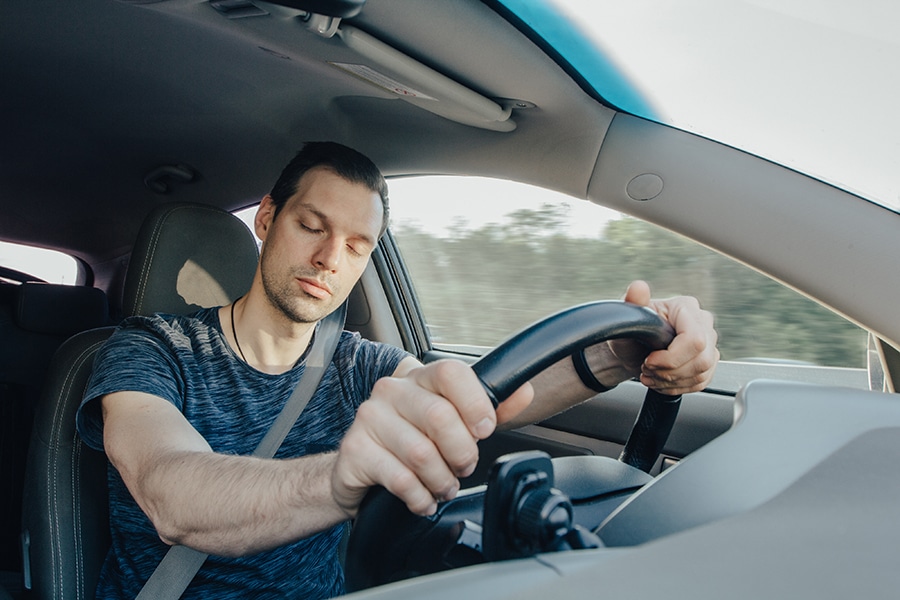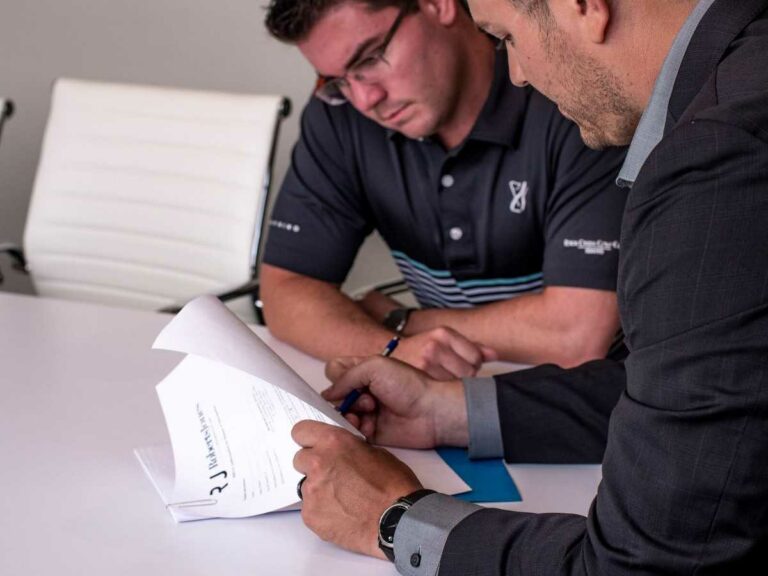When we are driving, we are usually one-dimensionally focused on where we are going and finding shortcuts to get there faster. We can become easily annoyed at heavy traffic or stopping at too many red lights.
But the condition we are in when driving can be most impactful on whether we will arrive at our destination on time, or at all. Too often we place a low priority on getting enough sleep, and with our time-starved schedules, we might be tempted to drive when we are drowsy, increasing the potential for experiencing traffic accidents and incurring bodily harm.
Drowsy driving is a major problem in the U.S., and the risk, danger, and often tragic results of driving while sleepy are staggering. Drowsy driving is the perilous combination of driving sleepiness or fatigue.
People driving while sleepy is more prevalent than you might think. Every year, approximately 100,000 police-reported crashes involve drowsy driving. These accidents result in more than 1,550 fatalities and 71,000 injuries.
What’s more, a study by the AAA Foundation for Traffic Safety estimated that as many as 328,000 drowsy driving crashes occur every year. This same study revealed that 109,000 of those drowsy driving collisions resulted in an injury and about 6,400 were fatal. It is estimated by researchers that the extent of drowsy driving fatalities is more than 350 percent greater than what is reported!
In addition to the human toll, there is an economic one, as well. According to the National Highway Traffic Safety Administration, or NHTSA, fatigue-related crashes that led to injury or death cost society $109 billion annually, and that does not include property damage.
The Impacts of Drowsy Driving
Driving while you are drowsy is akin to driving under the influence of alcohol.
For example, drowsy driving can cause you to have slower reaction times and impair your awareness of hazards. You might be surprised to know that after being awake for more than 20 hours at a time and then driving is the equivalent of driving with a blood-alcohol concentration of 0.08 percent, which is the legal limit.
You are also up to three times more likely to crash on the road if you are fatigued.
Because signs of fatigue are difficult to detect, a driver might not realize when he or she is exhausted. Some people can experience micro-sleep, which are brief, involuntary periods of inattention. In the four to five seconds that a driver can experience micro-sleep at highway speed, the vehicle will have traveled the length of a football field.
The impairment you experience when you are driving drowsy can make you less attentive to your surroundings and more easily distracted. Additionally, lack of sleep is also connected to worsened decision-making, which can bring about risk-taking behaviors while driving.

Signs That Indicate Your Are Experiencing Drowsy Driving
If you are finding yourself experiencing any of the following signs of drowsy driving, you should pull over to the closest exit and rest:
- Feeling like you’re dozing off
- Missing a road sign or exit
- Tailgating cars
- Having difficulty maintaining the correct speed
- Tired and droopy eyes or more frequently blinking
- Yawning often
- Not remembering recent miles driven
- Drifting into other lanes
- Hitting a rumble strip on the side of the road
You should be aware of these potentially dangerous signs, as they are a warning that you are in no condition to be driving. Pull off the road and rest until you feel awake and energized enough to get behind the wheel.
Ways to Prevent Drowsy Driving
There are simple measures you can take to avoid driving while you are drowsy and/or fatigued. You’ll find these recommendations are beneficial before or during driving.
Prior to Driving
Think ahead to limit the total hours you will be on the road. Try driving short distances at a time to avoid fatigue that can set in after too many hours driving.
Try not to drive during the drowsiest times of the day. Be aware that your body’s internal clock typically causes you to be sleepier between midnight and 6 a.m., as well as the early afternoon. Do what you can to adjust your driving times accordingly.
Plan for rest time during long intervals of driving. Build in time for several stops along the way to refresh your body and have more energy for driving.
Make sure you sleep well the night before extensive driving. The majority of adults require at least seven hours of sleep a day, and teen-agers should have a minimum of eight hours.
Don’t drink alcohol or take sedatives before driving, or the night before driving. These substances could interfere with quality sleep and cause you to be drowsy when you are driving the next day. Also be sure to inspect the labels on medications or talk with your pharmacist.
Arrange to have a travel companion who can take over driving responsibilities when needed to ensure you are always driving while wide awake and fully cognizant of your surroundings. Having someone else in the car who can share driving duties is a wise safety precaution, especially for long road trips.
During Driving
Look for warning signs when it comes to driving while drowsy. If you can tell that you are becoming sleepy, pull over at the next convenient exit. Don’t force yourself to keep driving in order to make better time. Instead, give yourself a short break from driving until you are refreshed enough to get back on the road.
Consuming caffeine. Caffeine is a stimulant that will likely make you more alert while driving, but just for a short time. Don’t look to caffeine as the ultimate solution to prevent drowsy driving. Once caffeine wears off, you probably will become sleepy again, in which case you should pull over and rest.
Be wary of diversions while driving as an attempt to stay awake. Some drivers will adjust their windows or turn on their air conditioning or turn up the volume on their radio as ways to avoid falling asleep behind the wheel. Doing this could take your attention away from focusing on the road, and could lead to an accident. Instead, take the pre-emptive measure before you feel yourself starting to nod off of pulling over at a rest stop to re-charge.
Roberts Jones Law Is Here To Serve Your Legal Needs During Personal Injury Cases
If you have been involved in an accident and there are multiple parties involved, you need legal services from an experienced personal injury attorney from Roberts Jones Law. Our attorneys at Roberts Jones Law have the expertise and experience necessary to effectively handle multiple insurance companies simultaneously and to build a case designed to protect your rights and interests.
At Roberts Jones Law we will provide you with the guidance, care, and support needed to secure the compensation you deserve. If you have been injured as a result of someone’s carelessness, breach of duty of care, or deliberate act, you have rights under the law to seek compensation for your damages.
Trust the attorneys at Roberts Jones Law when you want legal services catered to your individual needs.
This article is for informational purposes only and does not contain legal advice.





